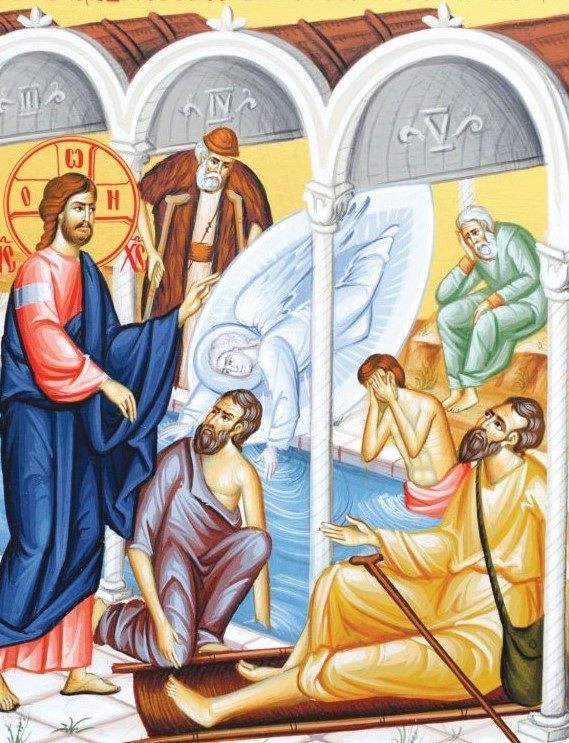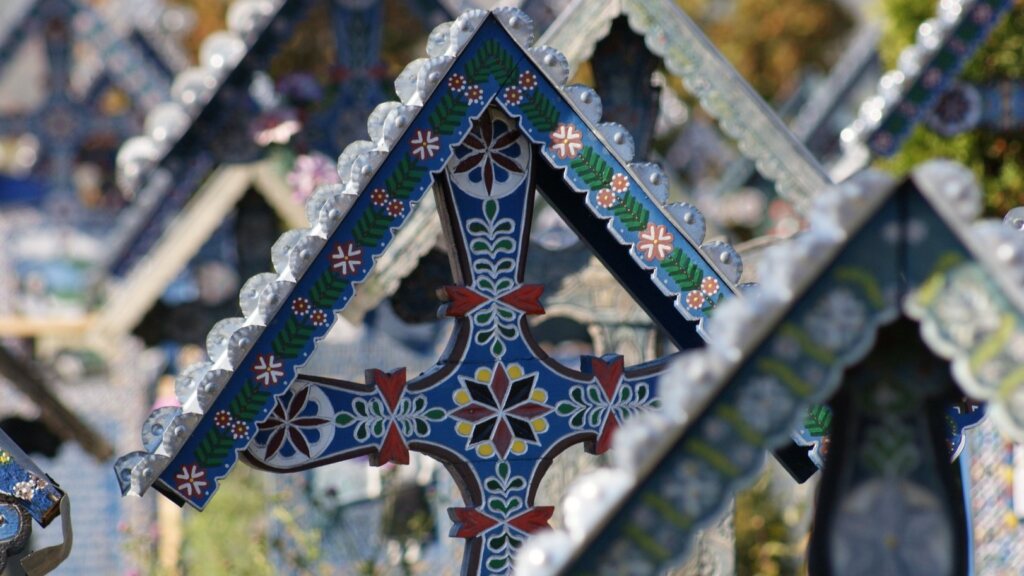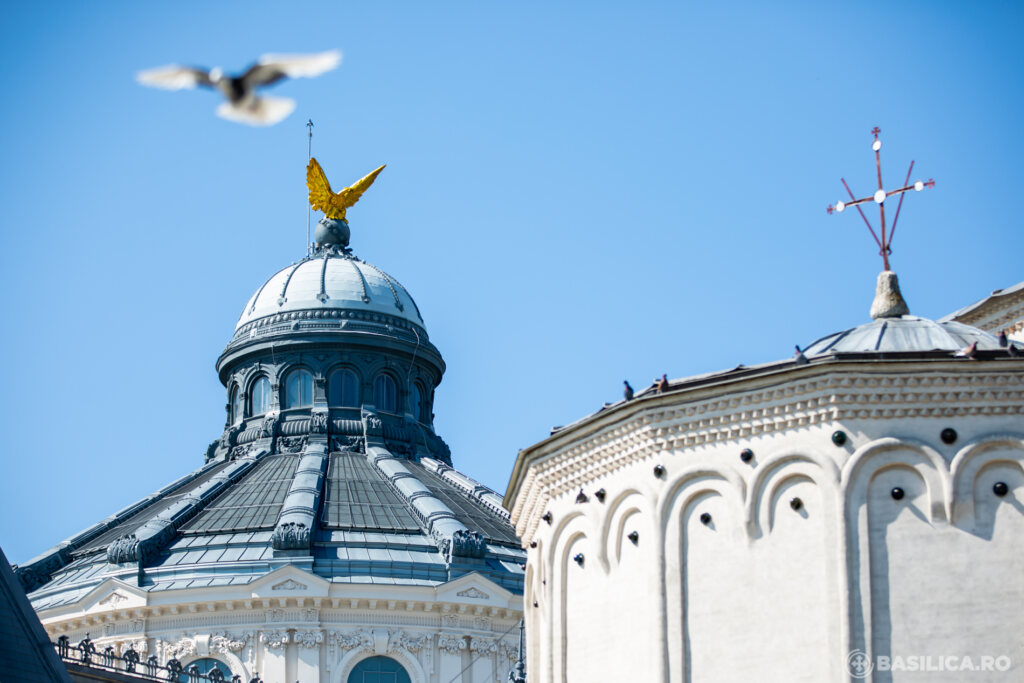Sunday of the Paralytic
In Judges 6:36-40 we read about Gideon and the dew on the fleece. When Gideon squeezed the fleece, there was enough to fill a bowl with water.
On the Fourth Sunday of Pascha, the Church remembers the man who lay paralyzed at the Sheep Pool in Jerusalem for thirty-eight years, waiting for someone to put him into the pool. The first person to enter the pool after an Angel troubled the water would be healed of his infirmities, but someone always entered the pool before him. Seeing the man, the Lord felt compassion for him and healed him.
The Lord healed the paralytic during the days of the Passover, when He had gone to Jerusalem for the Feast, and He remained there teaching and working miracles. According to Saint John the Theologian, this miracle took place on the Sabbath.
Like some Old Testament miracles, many of Christ’s miracles also involved water, and they prefigure the Church’s Baptism, which cleanses us of every sin. In the Sheep Pool, once a year, only one person was healed, but Christ saves endless multitudes by divine Baptism. Sometimes, as in the case of Saint Vladimir (July 15), Baptism can also heal our bodily infirmities.
In the Canon for the Paralytic, the Angel who stirred the water in the Sheep Pool is identified as the Archangel Michael. Some of the Troparia call him “Leader of the Angels,” and “Supreme Commander” (Ode 1). In Ode 3 we ask him to “protect us from falling into the passions of life.” In Ode 6, we ask Saint Michael to guide us on the paths of life.” In Ode 8, we ask him to pray with all the Bodiless Hosts, that we may be granted deliverance from our offenses, correction of our life, and the enjoyment of eternal blessings.
As we remember the paralytic, let us ask Christ to “raise up our souls, paralyzed by sins and thoughtless acts” (Kontakion of the paralytic).
The Precious Cross appeared in the sky over Jerusalem on the morning of May 7, 351 during the reign of the emperor Constantius, the son of Saint Constantine (May 21).
At that time the heresy of Arianism, which taught that Christ was merely a creature and not God, was causing great turmoil and division throughout the Empire. Even after the First Ecumenical Council at Nicea in 325, many people were drawn to this false teaching, and the Orthodox found themselves in the minority in many places.
Constantius, the ruler of the eastern part of the Empire, was a fervent supporter of Arianism. His brothers Constantine II and Constans, who were pious Orthodox Christians, ruled in the west. They were both killed in separate battles around 350, leaving Constantius as sole ruler. Also in 350, Saint Cyril (March 18) became Patriarch of Jerusalem and began his zealous struggle against Arianism.
In May of 351 a luminous Cross appeared over Jerusalem, stretching from Golgotha to the Mount of Olives, a distance of about five and a half miles. The Cross was wide as it was long, and shone more brightly than the sun.
Many people left their homes and workplaces to gather in the church and glorify Christ. The historian Sozomen says that this wondrous sign led to the conversion of multitudes of pagans and Jews to Christianity.
A letter from Saint Cyril to the emperor describing this phenomenon, and admonishing him to become Orthodox, has been preserved. The apparition of the Cross remained over the city for a whole week.
The vision of the Cross over Jerusalem strengthened the Orthodox faithful and contributed to the return of many Arians to the Church. It is also a reminder of the awesome Second Coming of Christ, when “the sign of the Son of man shall appear in heaven (Matthew 24:30).
Troparion — Tone 1
The image of Your cross has shown more brightly than the sun, / extending from the holy mountain to the place of the skull. / In it, You have shown Your strength, O Savior, / and confirmed all Orthodox Christians in the True Faith. / Through the prayers of the Theotokos, / save us, O Christ our God.
Saint Acacius lived in the third century, and was an officer in the Roman army during the time of Maximian. At his interrogation he declared that he had received a devout faith from his parents, and that he would remain steadfast in it, for he had seen many miracles of healing which took place at the relics of the saints.
After enduring many tortures in the city of Pyrrinthus, Thrace, he was taken to Byzantium. There he suffered further torments and was beheaded with a sword in the year 303.
Troparion — Tone 3
Your holy martyr Acacius, O Lord, / through his sufferings has received an incorruptible crown from You, our God. / For having Your strength, he laid low his adversaries, / and shattered the powerless boldness of demons. / Through his intercessions, save our souls!
Translated into English by oca.org






